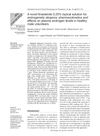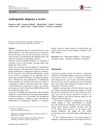If half life of fin is 6-8 hours in the blood but 5-6 days in tissue (scalp) why don't people apply topical every 3-4 days to minimize systemic? Treatment 11/9/2023
The discussion revolves around the frequency of applying topical finasteride for hair loss treatment. The main question is whether applying it every 4-5 days could still be effective, given that its half-life in the scalp tissue is 5-6 days.
View this post in the Community →
Similar Community Posts Join
6 / 1000+ resultscommunity 28M | topical finasteride (0.3%) minoxidil (6%) | 1.5 years progress
A 28-year-old man saw hair regrowth after 1.5 years using a topical treatment combining 0.3% finasteride and 6% minoxidil. He initially experienced anxiety with oral finasteride but had no side effects with the topical version.
community I was on 2.5 mg oral minoxidil
User took 2.5 mg oral minoxidil, saw hair growth but stopped due to excessive body hair. Recently started finasteride and plans to update progress.
community Is there a topical androgen receptor blocker so we don't have to fuck with the enzyme and destroy our allopregnanolone, but go and hit the end target straight?
The conversation discusses topical androgen receptor blockers for hair loss, mentioning Clascoterone, Pyrilutamide, GT20029, and RU58841. Ketoconazole's effectiveness and application methods are also debated.
community [study analysis] Microdose of topical Finasteride for all the benefits and none of the sides?
Topical finasteride as a potential alternative to oral finasteride for reducing DHT levels on the scalp with fewer side effects, and other hair loss treatments such as minoxidil.
community Is it sufficient to block scalp DHT topically, or is it also necessary to reduce serum DHT? (My Question is Elaborated Below)
Topical finasteride can be as effective as oral finasteride for hair regrowth with fewer systemic side effects, but precise dosing is essential. Combining oral dutasteride with topical finasteride is not recommended due to dutasteride's stronger inhibition.
community Ultimate DHT/finasteride microdosing graph to replace the commonly one referenced on forums
Hair loss treatments, specifically, discussing the effectiveness and side effects of finasteride, minoxidil, and RU58841 in various microdoses. It also includes an updated graph which provides information on how different doses affect DHT levels, scalp skin and serum androgen levels, as well as hair count.
Related Research
6 / 1000+ results
research A Novel Finasteride 0.25% Topical Solution for Androgenetic Alopecia: Pharmacokinetics and Effects on Plasma Androgen Levels in Healthy Male Volunteers
New finasteride solution effectively reduces baldness-causing hormone, potentially with fewer side effects.

research Antiandrogens and Androgen Inhibitors in Dermatologic Treatments
Antiandrogens and androgen inhibitors like spironolactone, finasteride, and dutasteride can treat hair loss and skin conditions, but they have risks and side effects, including potential harm to pregnant women and risks of cancer and heart issues. Herbal remedies also have antiandrogenic effects but lack safety validation.

research Androgenetic Alopecia: A Review
Male pattern baldness involves genetics, hormones, and needs better treatments.
research Treatment of Androgenetic Alopecia: Current Guidance and Unmet Needs
More personalized and effective treatments for androgenetic alopecia are needed.
research Kyoh Rocket Leaf Extract Regulates Proliferation and VEGF and FGF7 Expression in Human Dermal Follicle Papilla Cells
Kyoh® rocket leaf extract may promote hair growth naturally with fewer side effects.

research Androgenetic Alopecia: A Review and Emerging Treatments
Hair loss, known as Androgenetic Alopecia, is often caused by hormones and can be diagnosed using noninvasive techniques. Treatments include topical minoxidil and oral finasteride, with new treatments being explored. There may also be a link between this type of hair loss and heart disease risk.